Introduction
There are several types of hair loss and balding. While the mechanism of the phenomenon of hair loss and baldness is not fully understood, there is vast knowledge on the ability to treat the types of hair loss and baldness by medication or natural means.
We are dividing the alopecia types into treatable and non-treatable conditions and we shall hereby explain how one can evaluate the chances of successful treatment in the treatable conditions.
When evaluating the chances of improving the condition of the hair, the most important criteria is the condition of the hair follicles. As long as the hair follicles are alive, there is a chance to grow new hair. Otherwise, there is no basis for any treatment to succeed and the only options are cosmetic- wig, hair transplant, etc.
The life period of the hair follicles may reach up to twenty-five years. The hair follicles grow hair in cycles of growth and fall. In the process of hair loss, each cycle of growth produces shorter, thinner hair and there is less pigment (color).
When the scalp has a bright plume, it indicates that the hair follicle is still alive but dormant. Given the appropriate specialist's knowledge and therapy, the hair follicle can be stimulated to grow hair. However, if the surface is completely smooth, it indicates that the hair follicle is no longer alive and there is zero chance to grow hair- except in some cases as explained below (Alopecia Areata, Totalis and Universalis).
The different types of hair loss and the chances of growth of new hair are hereby given.
The conditions of hair loss that have no chance of hair regrowth are Alopecia from birth, Scarring Alopecia, Traction Alopecia, and Lupus disease.
Alopecia from birth is a rare condition, where the infant is born without hair follicles.
In Scarring Alopecia the infected zone looks like a scar and the hair follicles are dead. The reasons for the phenomena are unknown. The chances of growing new hair are zero, but with proper treatment, the expansion of the Scarring Alopecia can be stopped.
In Traction Alopecia the hair is pulled out of the scalp and the hair follicle becomes weak and dies.
In alopecia which is caused by Lupus disease, the skin is rough and pink and the chances of growth of hair are almost nonexistent.
Treatable Conditions
The conditions of hair loss which has a chance to be treated successfully are Male Pattern Alopecia, Alopecia Areata, Alopecia Totalis, and Alopecia Universalis.
Male Pattern Alopecia is common male baldness. Its characteristics are loss of hair at the front and crown area first. In many cases, there is still at least hair plume, hair loss and baldness can be stopped by affecting the hair follicles.
In Alopecia Areata condition, typical round hair loss patches evolve rapidly. Sometimes the bald patches spread to full hair loss of the scalp (Alopecia Totalis) or even whole body areas (Alopecia Universalis). The phenomenon could harm men, women, and small children. Conventional medicine assumes the Alopecia Areata condition is an autoimmune disease, though the exact mechanism of Alopecia Areata is not known nor fully understood.
In many cases Alopecia Areata is caused by psychological pressure: people who experienced trauma have sometimes lost entire hair within hours or days.
Evaluating Chances of Successful Treatment
As explained in the introduction, the condition of the hair follicles is the most important criterion for evaluating the chances of successful treatment. The existence of thin white hair is a visible sign of living hair follicles. The thin white hair can be noticed when examining the scalp from a close distance, with good light conditions. Sometimes viewing the scalp from an angle against the light source helps to see the thin white hair.
Naturally, when there is thin white hair on the alopecia area, it indicates that the hair follicles are weak but alive, so there is a basis to grow hair, given the proper treatment. But when the alopecia area is smooth, the evaluation depends on the alopecia type:
In male-pattern alopecia condition, a smooth scalp is a clear indication that the hair follicles are not alive and there is no chance to grow new hair. However in Alopecia Areata, Alopecia Totalis, and Alopecia Universalis the hair follicles sometimes remain alive even if the alopecia area is smooth, and evaluating the condition of the hair follicles should take into consideration other important factors.
The factors which play important role in the condition of the hair follicles and hence the chances of success:
- Age of the patient: at a younger age, there are higher chances to recover
- Period with Alopecia Areata condition: if the condition is recent, the chances are higher. Among people who experienced Alopecia Areata for decades, the hair follicles are probably too weak.
- Alopecia Areata's condition was due to a shock: In those cases, the chances of recovery are better.
- Use of violent and inappropriate treatment: Some treatments cause permanent damage to the hair follicles. In such cases, even if there is the growth of hair, it is common that once the treatment is stopped the hair falls and the hair follicles remain weaker, which makes it harder to stimulate growth.
- Thin white hair: as previously explained, if there is thin white hair the chances of recovery increase.
- Use of wig: When a wig is applied, the scalp's skin is not normally exposed to air and is not breathing (skin is not able to absorb oxygen). In the case of wig users, the chances of recovery are lower. If a wig is attached by glue, chances are near zero.
It should be emphasized that these are general guidelines for treatment success chances, based on experience with a population of Alopecia Areata patients. A personal evaluation is required in order to accurately evaluate the success chances of a specific person.
Choosing the Right Treatment
There are natural or medication therapies that are intended to revive the hair roots. When considering medication treatment, it is advised to consult with a specialist dermatologist and inquire about possible side effects. The internet includes vast information about the side effects of conventional treatments. In the case of natural treatments, it is advised to seek a treatment that is certified by a recognized organization. The treatment should be certified for being safe for usage and without any side effects. In order to be certified for zero side effects, the treatment should contain only herbs and plants with the maximal safety degree - edible herbs- as defined by the U.S. CTFA list of plants.


 Each of those treatments has both advantages and disadvantages. While natural treatment is safe, it requires you to wait before you can reap the result. Hair transplants, although able to provide you with quick solutions, are expensive. Therefore, think comprehensively before deciding to choose any of those treatments.
Each of those treatments has both advantages and disadvantages. While natural treatment is safe, it requires you to wait before you can reap the result. Hair transplants, although able to provide you with quick solutions, are expensive. Therefore, think comprehensively before deciding to choose any of those treatments.
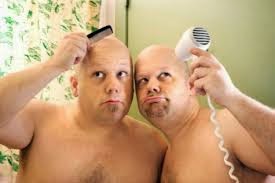




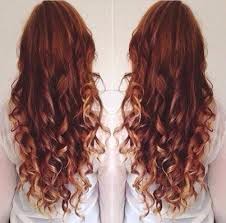





.jpg)

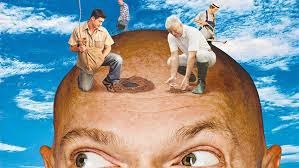
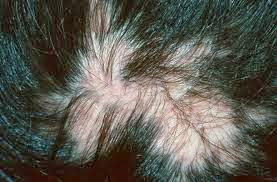
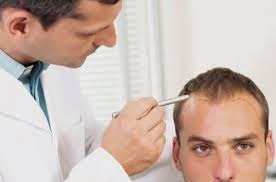

.jpg)






.jpg)
